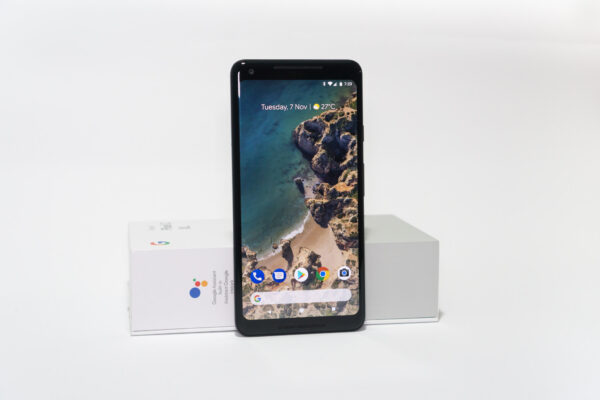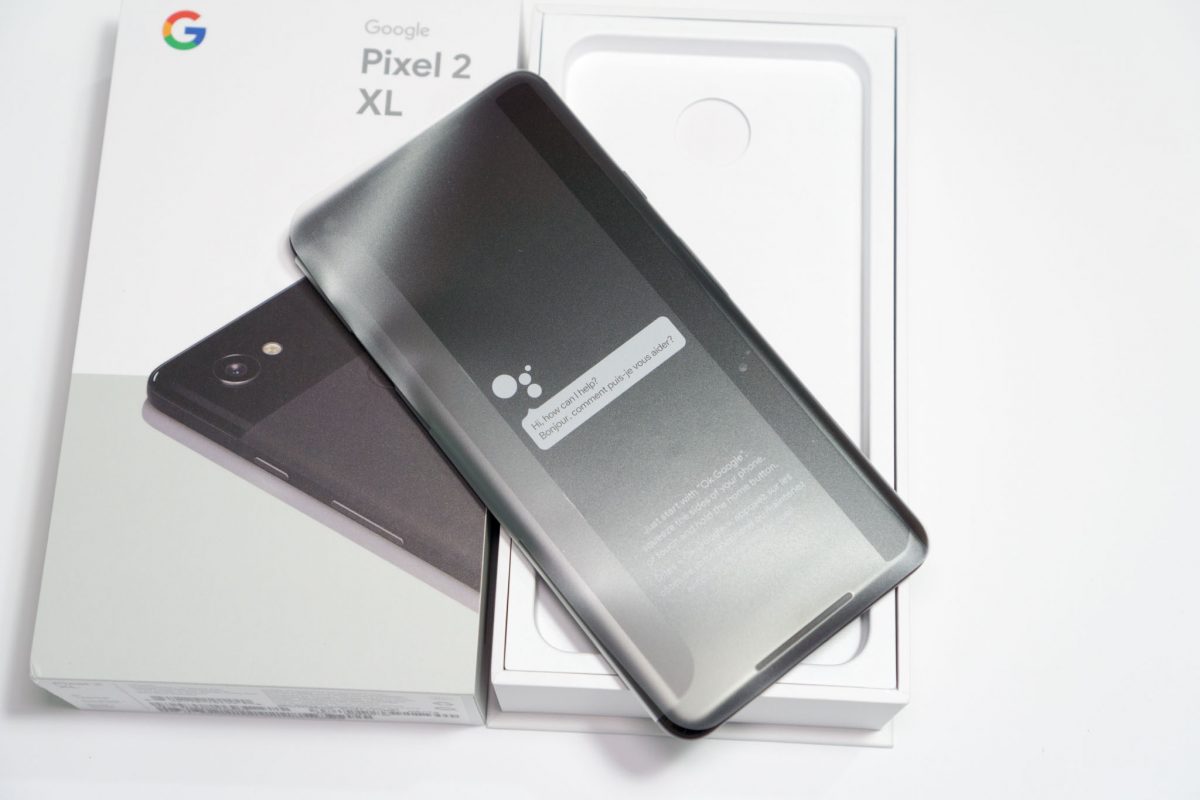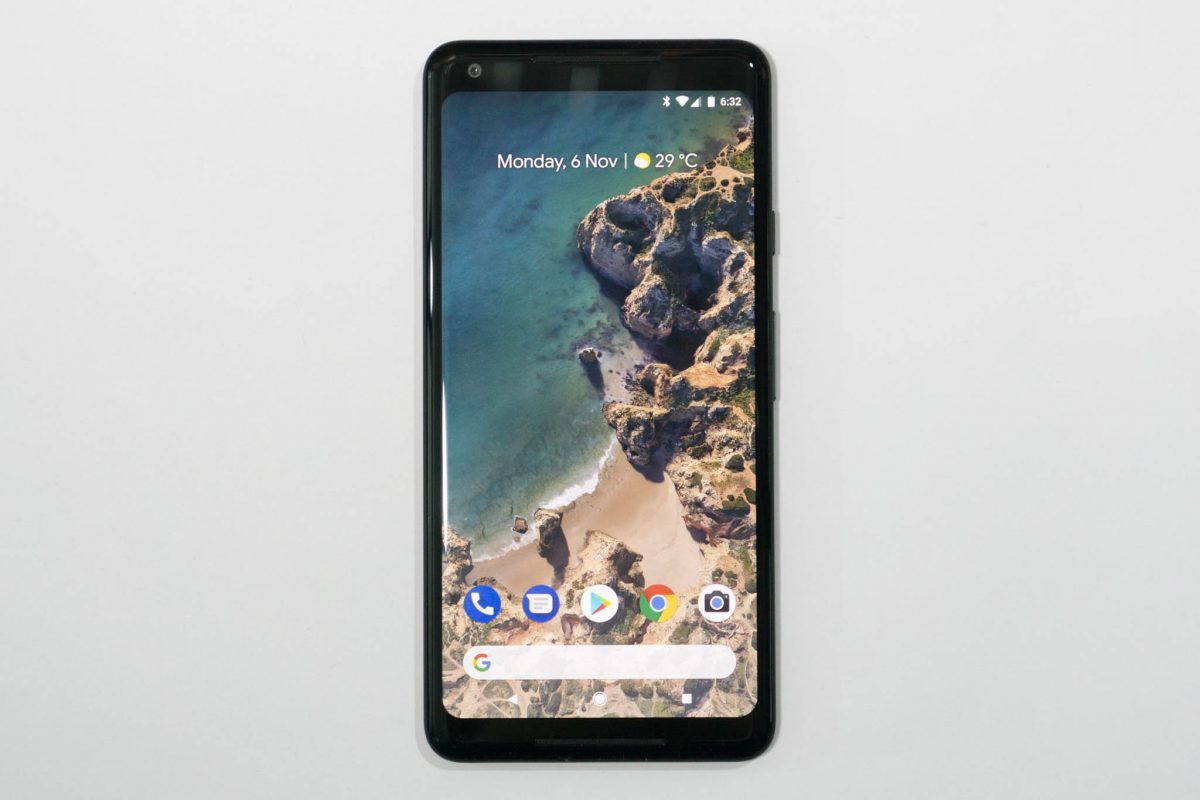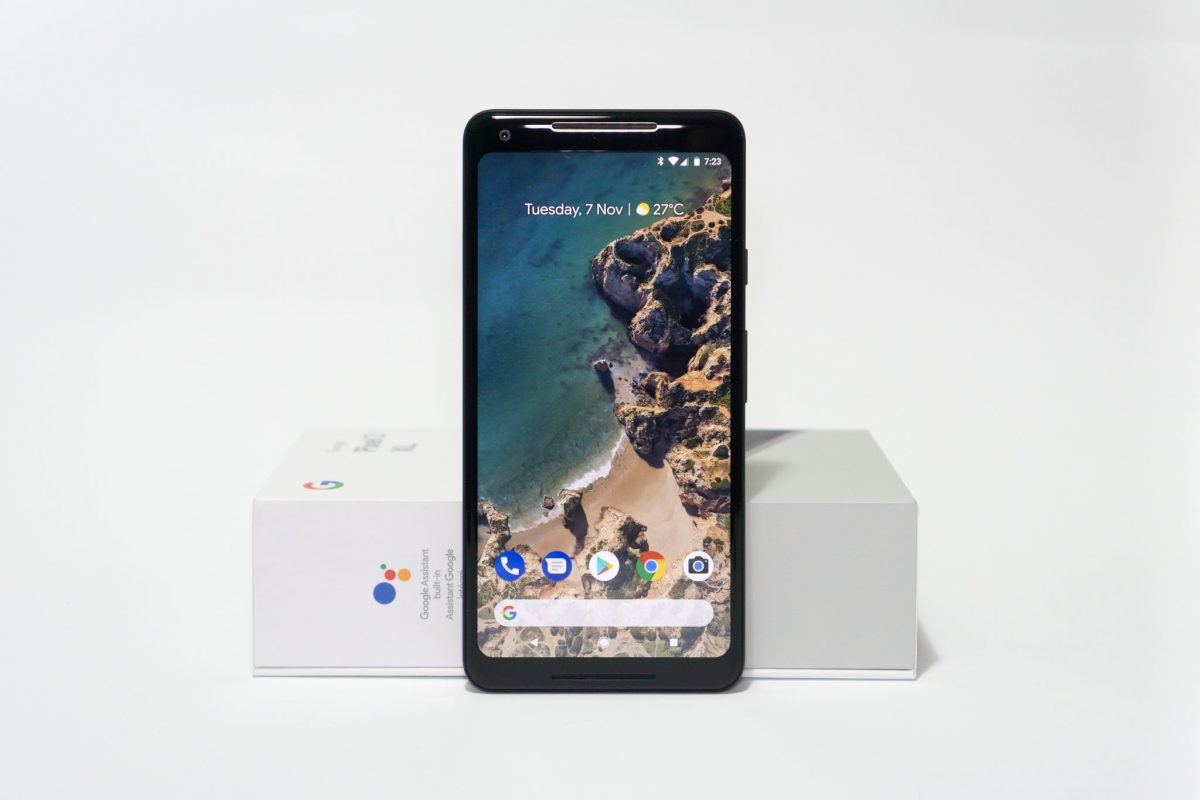
Google is back this year with the second generation of their Pixel smartphones. Last year’s Pixel and Pixel XL with best-in-class cameras seem hard to beat, but the new Pixel 2 and Pixel 2 XL far outshine them in just about every way. By marrying hardware, software, and AI, Google has a winning formula with the new Pixels.
However, the new Pixel smartphones, the Pixel 2 XL in particular, are blighted by more than the usual number of issues in the early days after the new device got into consumers’ hands. I addressed the major ones in my First Hour Impressions of the Pixel 2 XL, and since then, yet more, though comparatively less impactful ones, continue to crop up. Let me mention some of them quickly before getting into the review.
The blue tint on the screen when viewed at an angle is real. I think the extent of the problem could vary from one Pixel 2 XL device to another. It’s annoying, but I think it’s possible to get over it. As Steve Jobs would have said, you’re holding it wrong. On the issue of natural colours, that could be a matter of preference, and Google has since addressed that with a software update that brings back a saturated setting, putting back the vibrancy that so many users are clamouring for. As for burn-in, Google says the characteristics of the Pixel 2 XL’s LG display are comparable to OLED panels used in other premium smartphones. That notwithstanding, Google is extending the Pixel 2 XL warranty to 2 years, and will make some software tweaks to mitigate any potential burn-in. That’s the gist of it. With that out of the way, let’s get on with the review.

Like last year, the two Pixel smartphones this year are almost identical except for size. The Pixel 2 XL is the larger of the two, with a 6-inch screen instead of 5-inch, has 2880×1440 resolution instead of 1920×1080, and comes with 3520 mAh battery instead of 2700 mAh. The front of the new Pixels look a bit different, with the larger Pixel 2 XL having lesser bezel space, but the hardware specs are otherwise mostly identical. The Pixel 2 XL measures 157.9 x 76.7 x 7.9 mm, and weighs 175 grams. This is a comfortable and manageable size to hold. The screen is bigger, but the phone hasn’t gotten too wide.

The Pixel 2 XL’s new design addresses a few of the main complaints of last year’s Pixel XL. The huge bezels from before have slimmed down. It’s nowhere as minimal as the likes of Samsung Galaxy S8 Plus. However, there’s a good reason for the space there. The Pixel 2 XL now has two impressive front-facing speakers.The bit of bezel space there also makes it easier to hold the Pixel 2 XL when you’re playing games on it, and it makes so much sense for the speakers to face you that I wonder why anyone would design speakers to face any other direction to begin with.
The front face is covered entirely by a slab of Gorilla Glass 5, curved around all the edges. The 2800×1440 resolution pOLED display underneath is not curved, but does have rounded corners. The LG-made pOLED display is essentially the same technology as Samsung’s AMOLED.

There’s the usual power and volume rocker buttons on the right side (top in the photo above), and a nano-SIM tray on the left side (bottom in the photo above). This is the all-black colour Pixel 2 XL I have for this review, or what Google calls “Just Black”. The Pixel 2 XL is also available in “Black and White”, popularly referred to as Panda colour, and in this version, you’ll find the sides are white, and Google added a fun twist by colouring the power button in orange.
There’s just a single USB Type-C (USB-C) port at the bottom of the phone (left in photo below).

After proudly announcing they’ve kept the 3.5 mm headphone jack around in last year’s Pixels, Google has abandoned it this time around. It’s time to live the dongle life, or get yourself a new pair of Bluetooth headphones. If you decide the former, Google has included a USB-C to 3.5 mm dongle in the box.
The back of the Pixel 2 XL has a design that makes it uniquely identifiable as a Pixel. There’s glass at the top, and aluminium below. But compared to last year, there is less glass now, and the aluminium is covered in what Google says is a hybrid coating. The new coating feels like a plasticky textured material that helps make the device more grippy. It seems a bit strange to build a metal phone, and then put plastic on it, but I suppose the metal adds rigidity to what would otherwise feel flimsily cheap. As before, the fingerprint scanner is on the back, properly centred laterally, exactly where your index finger can easily rest on.

In the Black and White version of the Pixel 2 XL, the glass part of the back is black, but the metal (or hybrid coating) beneath is white, giving the smartphone a very unique and attractive look.
Whichever the colour, I like the mix of glass and aluminium on the back. This same design is present across all Pixel smartphones, so while the devices themselves are largely unremarkable in looks, there’s at least something that makes them easily recognisable.
There are other notable hardware improvements in the new Pixel 2 XL. It now has IP67 water and dust resistance, something I really looked forward to after seeing how Samsung and iPhone users could bring their smartphones to the pool.
The camera is also improved, adding OIS to the new 12.2 MP sensor on the rear camera, with f/1.8 aperture, laser and dual pixel phase detection autofocus, which still does EIS. The front camera has a 8 MP sensor with f/2.4 aperture. I thought the Pixel XL’s amazing camera last year, having claimed the best smartphone camera ever on the DxOMark Mobile score, would be tough to beat, but the Pixel 2 XL came out far better, setting a new DxOMark Mobile record score of 98. I’ll talk about camera again later.
A cool trick that the Pixel 2 XL borrowed from HTC is its squeezable sides. You can squeeze the Pixel 2 XL to activate Google Assistant. It’s gimmicky, but I think it can be useful nonetheless.
Under the hood, the Pixel 2 XL is has the hardware to match 2017 flagship expectations. It is powered by Qualcomm Octa-core Snapdragon 835 with 4 GB of LPDDR4x memory. You can choose either 64 GB or 128 GB of flash storage, and not unexpectedly, there is no microSD slot.
The Pixel 2 XL offers 802.11a/b/g/n/ac Wi-Fi, Bluetooth 5.0 BLE, and NFC. For positioning, it supports GPS with A-GPS, Glonass, BDS, and Galileo.
On the cellular front, the Pixel 2 XL supports up to LTE Cat 15 (800 Mbps down, 75 Mbps up), as well as GSM/EDGE, UMTS, CMDA EVDO and TD-LTE networks. There is just one global version of the device. It’s a small point to note, but with most smartphones, including Apple’s iPhone X, have different variants for specific markets due to the variety of network types and frequency bands used.
The Pixel 2 XL supports e-SIM which can be used with Google Fi network. It’s unclear if this can be used with any other carrier.
There’s one notable feature, not already mentioned, that didn’t make it into the Pixel 2 XL. It’s wireless charging. Since Google is already pushing for headphones to go wireless, you’d think they should do the same for charging. Unfortunately, you need a cable for that, and Google provides a 18 W USB-C charger in the box.
Hardware is just one part of the smartphone. With Google, the new Pixel smartphones are also about software and AI. But before I talk about that, let me just mention one more relevant hardware feature. The Pixel 2 XL packs a new Google system-on-chip, the Pixel Visual Core, which enables new image processing and machine learning capabilities. This chip can perform HDR+ image processing at 5x speed using just one-tenth power consumption compared with the main application processor. The Pixel Visual Core is just sitting there, not yet used, at the moment. It’ll only be activated from the release of Android Oreo 8.1.
Photos have been a huge part of the original Pixels. The new Pixel 2 XL improved on the best of 2016 to become the new best of 2017. Photos from the Pixel 2 XL are just completely, amazingly, gorgeous. It’s not just because DxOMark says so, but in real-life use, the Pixel 2 XL threatens to obsolete any point-and-shoot compacts out there, if not for the zoomable lenses usually available on them.
First, let’s talk about the new Portrait mode. I agree last year’s Lens Blur is a bad gimmick. The Pixel 2 XL’s new Portrait mode, however, is really impressive. It’s even more impressive that Google has achieved this using just one camera sensor, while other manufacturers had to rely on dual camera setups. The new dual pixel sensor on the rear camera helps supply depth information, but the real magic is in AI, as evidenced by amazing Portrait mode shots even on the front camera that lacks the dual pixel sensor. Look at the sample below. Can you tell which is the front camera and which is the rear camera?

In the above sample, the left photo is shot from the rear camera. The bokeh effect from the front camera, photo on the right, is quite comparable to that from the rear camera! Since there is no dual pixel capability available, the Pixel 2 XL is doing that entirely in software with AI.
Portrait mode isn’t limited to people. Here’s a photo sample of an inanimate object.

Without Portrait mode, the f/1.8 lens on its own can already manage some cool depth-of-field effect.

The other standout camera feature is the HDR+ and HDR+ Enhanced processing. The Pixel 2 XL generally produces very good results in many difficult lighting conditions, such as scenes with brightly-lit windows in the background.

Videos shot on the Pixel 2 XL are also very good, especially in terms of stabilisation. While most smartphones use either OIS or EIS, the Pixel 2 XL uses both OIS and EIS together. As Google shares in a blog post, they use advanced software algorithms to produce stabilised video frames. They can effectively camera shake, motion blur, rolling shutter, focus breathing, jello artefact, and various other problems. The results are impressive. The audio recorded in videos, however, isn’t quite so good.
This review isn’t meant to be focused on photography, so I won’t go on and on about the camera. Suffice to say, I’m really impressed with the Pixel 2 XL’s photo-taking capabilities, and I’m quite convinced it’s pretty much the best smartphone camera you can get today. Yes, I took a couple of blind tests, and the Pixel 2 XL beats the iPhone 8 Plus and Samsung Galaxy S8 Plus.
Photo storage on the Pixel 2 XL is supplemented by free, unlimited, “original quality” photos and videos on Google Photos until year 2020, although on my Pixel 2 XL, the Google Photos app says it’s specifically until 16 Jan 2021. That’s a little over 3 years. I think anyone would have moved on to another smartphone in less than 3 years, even if the batteries haven’t already died by then.
The Pixel 2 XL ships with Android Oreo 8.0. Oreo offers a few key features like picture-in-picture mode, which is supported by apps like Google Maps and YouTube. Google Assistant works very well, at least most of the time. I find it very useful for setting quick alarms, timers, and to send simple text messages.
There are some new features supported specifically on the new Pixels. A new always-on display is enabled by default, always displaying time and notification icons. You can now easily check the time and see if you have any pending notifications when you simply leave the Pixel 2 XL on the table, no need to wake/unlock it each time.
If you allow, the Pixel 2 XL can continuously listen for sounds in the background, and automatically show the name and artist on the always-on display. The song matching is performed using a limited local database, so it’s totally offline and doesn’t send any songs or conversations to Google. The limited database is region specific, and it receives automatic updates when the Pixel 2 XL is connected to Wi-Fi.
The Pixel 2 XL comes with a new launcher. The Google search bar is now at the bottom, making it more accessible than before. I get it, Google wants us to search more.
Overall, the Android experience on the Pixel 2 XL is absolutely amazing. UI transitions are extremely smooth, noticeably better than even last year’s Pixel XL.
Google has promised three full years of OS platform updates for the Pixel 2 XL, which means you will get Android P, Android Q, and Android R. It is also going to be the first to get these new Android upgrades directly from Google. This is a huge thing, because you’re not going to get that with smartphones from any other manufacturer. You can also be assured of getting the most timely security updates, directly from Google.

All things considered, the Pixel 2 XL is a truly spectacular Android flagship smartphone. I’m very happy to see IP67 certification and front-facing stereo speakers. I’m also impressed that the Pixel 2 XL is again the best-rated smartphone camera according to DxOMark. However, there are a few misses, like the lack of wireless charging, and maybe some people will lament the departure of the 3.5 mm audio jack. The most troubling issues, however, may be with the display, and if you’ve to spend that much money that Google is asking for the Pixel 2 XL, the problems are inexcusable. I haven’t found the display to be a showstopper, but each individual may have a different opinion.
For the first time, and also for a limited time, Google has brought the Pixel 2 XL to Singapore via an exclusive arrangement with SingTel. However, only the 64 GB model is available, and SingTel requires you to buy the smartphone on contract. The Pixel 2 XL price varies according to the mobile plan, but as an example, you can get it for S$868 on the Combo 2 plan (S$42.90 monthly, 2 GB, 200 mins, 1,000 SMS), which is slightly more than an iPhone 8 Plus, but substantially less than an iPhone X.
Conclusion
The Google Pixel 2 XL is truly an Android flagship smartphone, with the most amazing camera, and the best Android experience you can get. There are some screen issues, though, and you’ll have to see if you can look past them.
Pros:
- Best camera
- Excellent battery life
- IP67 certified
- Best Android experience, very fluid UI experience
- Good front-facing speakers
Cons:
- No wireless charging
- No 3.5 mm headphone jack
incomplete review, no mention on the other screen problems like the serious burn-in, black crushing, wash-out, etcs.
Yup, I didn’t intend to repeat everything that others have mentioned, just only those that mattered to me. I did talk about burn-in and wash-out (“natural” colours) in an earlier post already referenced.